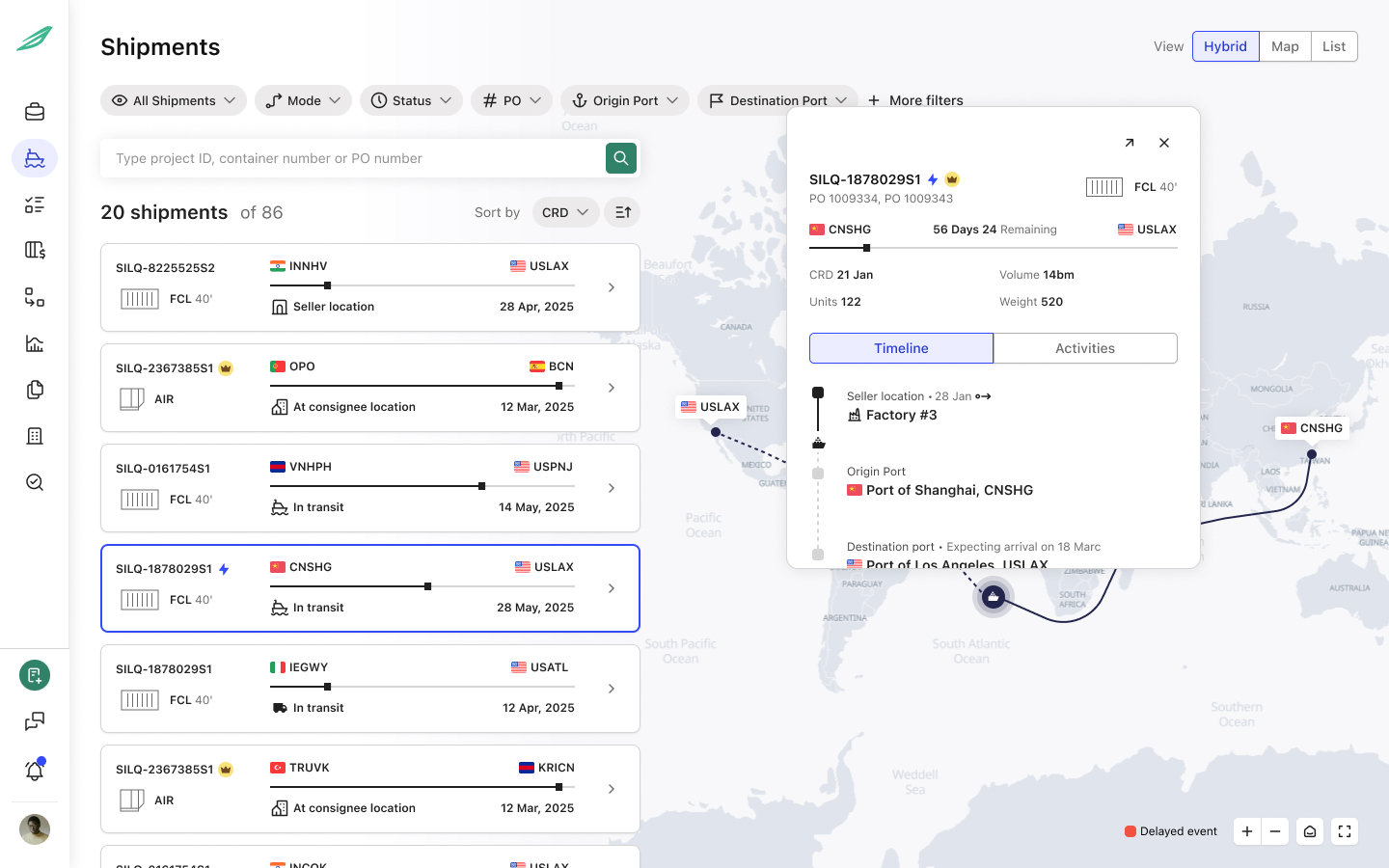Peak Shipping Season 2025 | 10 Expert Tips to Avoid Delays

Peak shipping season is the most volatile time of year for global freight. Running from late July through October for ocean freight and extending into November for air freight and e-commerce, this window is driven by back-to-school demand, Black Friday/Cyber Monday prep, and year-end inventory pushes.
In 2025, shippers are already seeing signs of stress across ports, trucking, and warehousing operations, given the global trade policy and tariff uncertainty. For importers managing high-value goods such as electronics, apparel, home furnishings, or beauty products, delays in Q3 and Q4 can result in missed launches, stockouts during peak holiday shopping, and unexpected cost overruns.
With global shipping volumes on the rise, pricing becoming increasingly unpredictable, and supply chain disruptions still emerging post-pandemic, it's mission-critical to plan ahead. In this article, we break down 10 practical strategies logistics professionals can use to mitigate risks, control freight costs, and streamline operations during the 2025 peak shipping season.
What to Expect from Peak Shipping Season 2025
Several macro factors are shaping this year’s peak shipping season:
- Increased demand from both e-commerce and traditional retailers
- Ongoing congestion at major US ports like LA/Long Beach and New York/New Jersey
- Peak season surcharges (PSS) and GRIs from carriers, especially on transpacific routes
- Geopolitical volatility (e.g., Red Sea risk, Panama Canal restrictions)
- Pandemic-era delays still creating ripple effects in container positioning
Combined with tightening inventory levels, labor shortages, and rising freight rates, the risks for Q3-Q4 2025 are real and avoidable with the right supply chain strategy.
10 Expert Tips to Avoid Peak Shipping Season Delays
1. Book Ocean & Air Freight Space Early
Shipping capacity becomes a premium commodity during peak season. If you're relying on ocean freight, secure bookings at least 30-45 days in advance. For air freight, a 2-3 week lead is ideal. Waiting until the last minute increases the likelihood of rollovers, inflated spot freight rates, and poor transit time reliability. Early booking also helps avoid peak season surcharges that spike in August and September.
2. Split Shipments by SKU Priority
Not all goods are created equal. Segment shipments based on:
- High-margin, high-turnover SKUs
- Seasonal or promotional timelines (e.g., Black Friday, Cyber Monday, holiday season)
- Backup inventory or non-urgent goods
Utilizing different shipping methods (air for top-performing items, SCL for high-volume SKUs) keeps your distribution centers agile and facilitates smoother inventory management.
3. Schedule Inline & Pre-Shipment Inspections Early
Delays at origin are often triggered by last-minute surprises. Implement inline inspections during production and pre-shipment QC 10-14 days ahead of ETD. With factories rushing orders before Golden Week, inspection capacity gets tight.

Inspections help importers avoid costly rework, minimize potential delays, and ensure compliance with specs, especially for high-end consumer products.
4. Diversify Port Options
US coastal ports often become choke points. West Coast terminals like LA and Oakland face backlogs, chassis shortages, and truckload constraints. To reduce risk:
- Explore Gulf Coast gateways for Southeast Asia origin shipments
- Instead of relying solely on port performance data, shippers should partner with trusted freight forwarders like Silq, who can proactively navigate chokepoints and offer flexible shipping options in real time.
5. Lock In Contracts and Negotiate Priority Loading
Don’t rely solely on spot market pricing. Instead:
- Work with your freight forwarding partner to secure fixed-rate agreements
- Negotiate priority loading guarantees for critical cargo
- Avoid carriers with a high blank sailing record during peak season
A strong logistics provider can help you hedge against volatile rate increases and limited space.
6. Maximize Container Utilization
Under-utilized containers waste both time and money. To optimize:
- Mix SKUs to hit ideal load ratios
- Work with suppliers to streamline palletization and reduce dead space
- Consider LCL consolidation strategies where full container loads aren't possible
This helps manage both costs and warehouse throughput upon arrival.
7. Build Inventory Buffers in Advance
Given longer lead times and freight volatility, importers should:
- Front-load inventory between May and July
- Reassess forecasting for Q4 promotions
- Account for slower last-mile delivery windows
Brands that stock up before crunch time reduce pressure on operations and create more responsive fulfillment models.
Read More: Preventing Stockouts & Maximizing Sales: Smart Inventory Allocation Strategies for High-End Brands
8. Digitize PO and Supplier Coordination
Poor communication with overseas suppliers is a top cause of delays. Solutions:
- Implement real-time PO management systems
- Use shared visibility dashboards
- Automate notifications around booking, inspections, and shipping status
Automation reduces manual error and gives supply chain teams better control over incoming goods.
9. Prepare for Customs and Compliance
Documentation issues and customs holds peak during high-volume seasons. Tips:
- Ensure all commercial invoices, packing lists, and HS codes are accurate
- File ISF well in advance
- Monitor for changing tariffs or compliance rules, especially for electronics and textiles
A compliance-ready shipment moves faster through CBP and avoids last-minute holds.
10. Use Real-Time Freight Visibility Tools
Knowing where your goods are in transit is critical during volatile times. Invest in:
- Real-time tracking tools with digital freight platforms
- Automated milestone alerts for key delivery stages
- SKU-level visibility tied to inventory systems

Better visibility empowers importers to reroute, escalate, or mitigate risk in real-time.
Key Dates for Peak Shipping Season 2025 (Q3 & Q4)
*Subject to change based on market conditions and carrier schedules.
Don’t Let Delays Define Q4 – Plan Ahead
Peak season doesn't have to mean chaos. With thoughtful planning, proactive coordination, and the right logistics services in place, you can protect your margin, ensure on-time delivery, and keep your supply chain running smoothly during Q3 and Q4.
Silq helps importers simplify peak shipping season with:
- Integrated freight shipping and inspection management
- Real-time PO and shipment visibility
- Hands-on coordination across ocean freight, air freight, and warehousing
Need support navigating peak shipping season? Let Silq help you streamline operations, mitigate delays, and hit every delivery window.
Peak shipping season is the period from late July through October when global freight demand spikes due to back-to-school and holiday inventory planning.
Rates rise due to increased demand, limited carrier space, port congestion, and added peak season surcharges.
Start early, segment your SKUs, coordinate with suppliers, and invest in real-time tracking and inspection services to avoid surprises.
Ready for Supply Chain Predictability?
Importers using Silq ship smarter, safer, and with total control.







